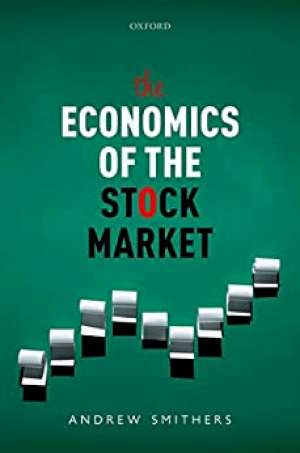28 March 2022
The Economics of the Stock Market
Andrew Smithers
2022, Oxford University Press, 224 pages,
ISBN 9780192847096
Reviewer: Sunil Krishnan, Aviva Investors

It has been hard to generate real enthusiasm for general equilibrium analysis in recent years. While dynamic stochastic general equilibrium (DSGE) models provide a pleasing union of macroeconomic aggregates with transparent micro-foundations, the core insights are now decades old and much of the work since has been in less consequential work of extension and calibration.
In this sense it requires either a long memory or historical imagination to picture the reaction which may have greeted Keynes’ General Theory. Reading it today, one is struck both by the breadth of subjects covered and by how dramatically the style of reasoning and argumentation differs from contemporary macroeconomics. These observations are connected; it is almost impossible to imagine a contemporary orthodox approach being able to reach definitive conclusions across such a sweep of economic life.
While comparisons with Keynes might seem overly grand, it is possible to feel a similar sense of freshness at the approach taken by Andrew Smithers in his new book. He ostensibly focuses on the stock market but the treatment is wide ranging. The book sets out to challenge a number of assumptions and results in neoclassical models, with conclusions on the nature of corporate finance (listed and unlisted), financial stability, demographics and the structure of pensions, and the expense/capitalise debate in the national accounts. The conclusions are also firmly stated, and at times proudly in defiance of received wisdom. This is made possible by the style of reasoning, which leans primarily on accounting identities, observations of individual behaviour and high-level empirical evidence, rather than model solutions and calibration.
Having stated that the real return on equity is stable in the long run, Smithers provides a number of empirical approaches which broadly reinforce this. This becomes a gateway to a number of other conclusions, such as the impact of household portfolio preferences (overwhelmingly on leverage rather than equity); the solution to the equity premium puzzle (because the neoclassical representative investor is a speculator rather than a rainy-day saver); and the invalidity of the Modigliani-Miller Theorem that firm values are independent of capital structure (because leverage does not raise individual cost of equity). The alternative approach to argument is both a refreshing change and a necessary tool to reach these challenging conclusions.
Readers of Smithers’ previous work will recognise a few familiar threads here. Stability of equity returns, debunking flawed market valuation techniques, and the impact of the bonus culture have all themselves been the subject of earlier publishing. But the new offering is worth the attention of past readers for two reasons. First, Smithers’ thinking on these subjects has evolved in response to new data. The Anglo-Saxon bonus culture, for example, still drives underinvestment in listed firms, but may not matter as it is losing out to other more growth-oriented corporate structures. The discussion of this topic also highlights another strength of the book. Smithers’ observations on how the behaviour of managers, savers and professional investors diverges from mainstream theory are, in this reader’s experience, on the mark.
Second, the knitting together of these diverse threads into general equilibrium thinking is new and, to this reader, exciting. The overarching model captures some interesting features of the financial economy, but is parsimonious enough that it could in fact be absorbed into a more conventional general equilibrium model. In this sense it represents a more promising way to incorporate finance into macro than the narrow efforts to give the neoclassical economy a complex banking sector.
It is possible to take issues with the method. Those empirical observations, particularly of stability in variables such as equity returns, lifespan of fixed capital and capital-output ratios, perform critical roles in establishing or undermining theoretical relationships. In some cases, the stability can be in the eye of the beholder, especially when extensive multi-decade averages are taken. While the claim that real equity returns revolve around a mean of 6.7% is well-evidenced, it hints at fragility (what if the true rate migrates to 6.8%? 7.7%? 67%? How should we judge this?) It would be interesting to consider the potential causes and consequences were any of these mean-reverting relationships to break down in future.
In addition – another feature which this reader found in common with the General Theory – some of the accounting relationships are hard to follow in sentence format, particularly when the conclusions are counter-intuitive. Few ideas can be improved by adding rather than subtracting algebra, but there may be one or two examples in the book.
In the book’s favour, though, is that conclusions are clearly stated and there has been a deliberate focus on the creation of testable predictions. Developing and executing these tests would be a logical next step if the ideas can gather the attention and debate they deserve. The other obvious departure would be to expand on the potential implications of the research for investors, both in equities and other capital markets. This could be one of the few results for a Google search of “stock market book” that does not offer investment guidance as such. But investors, along with corporate managers, regulators and setters of fiscal or monetary policy, would be well advised to read and form their own conclusions.
